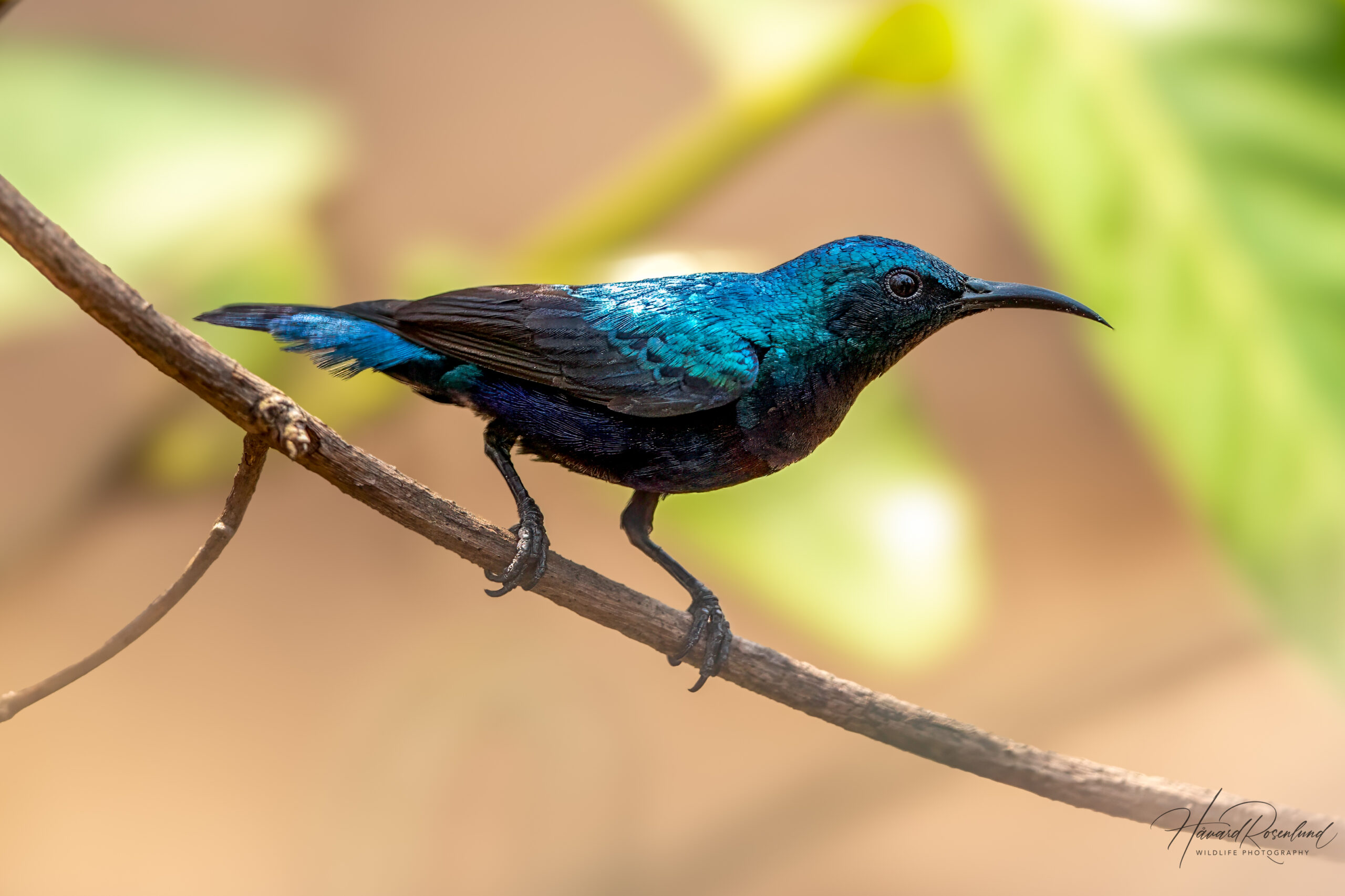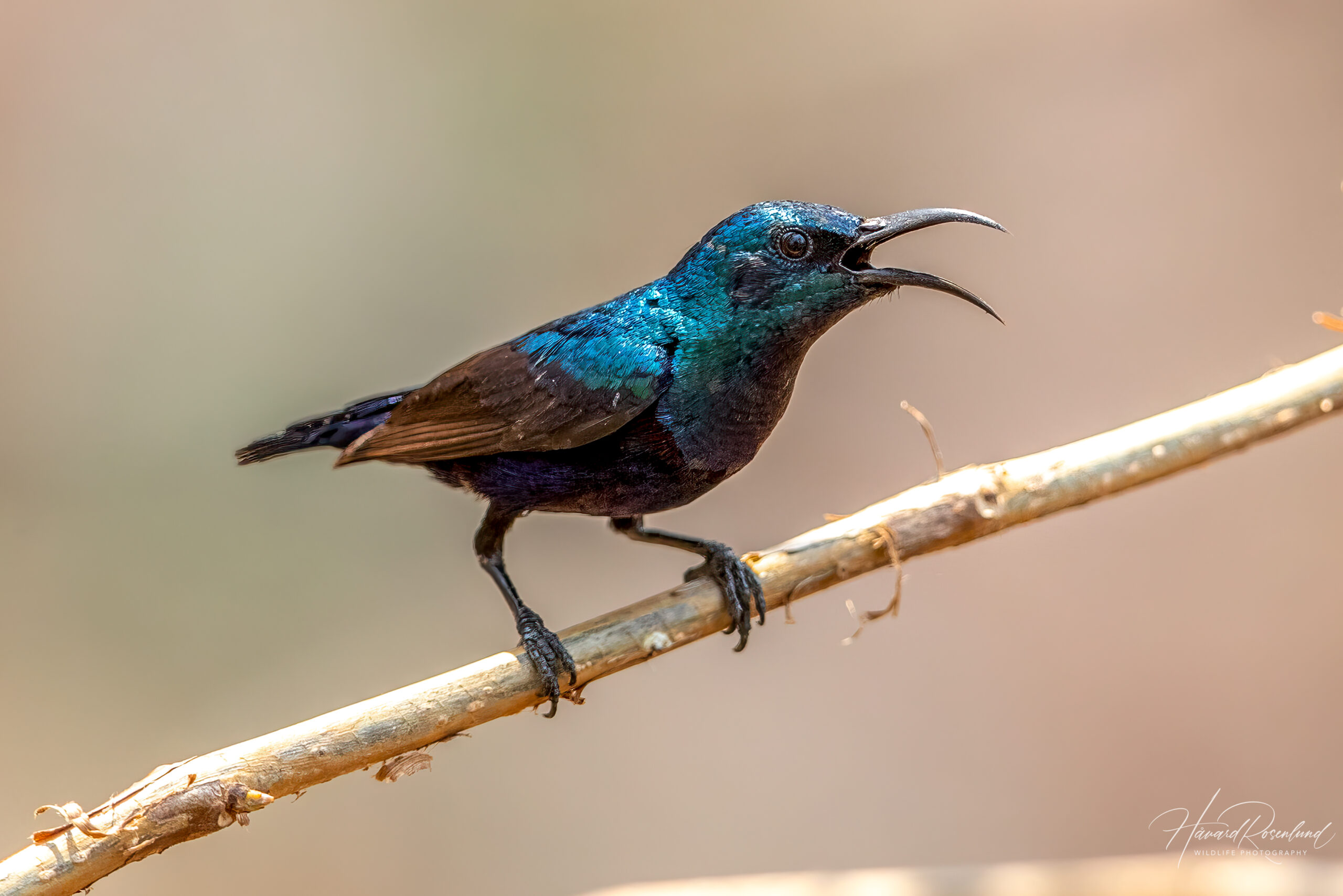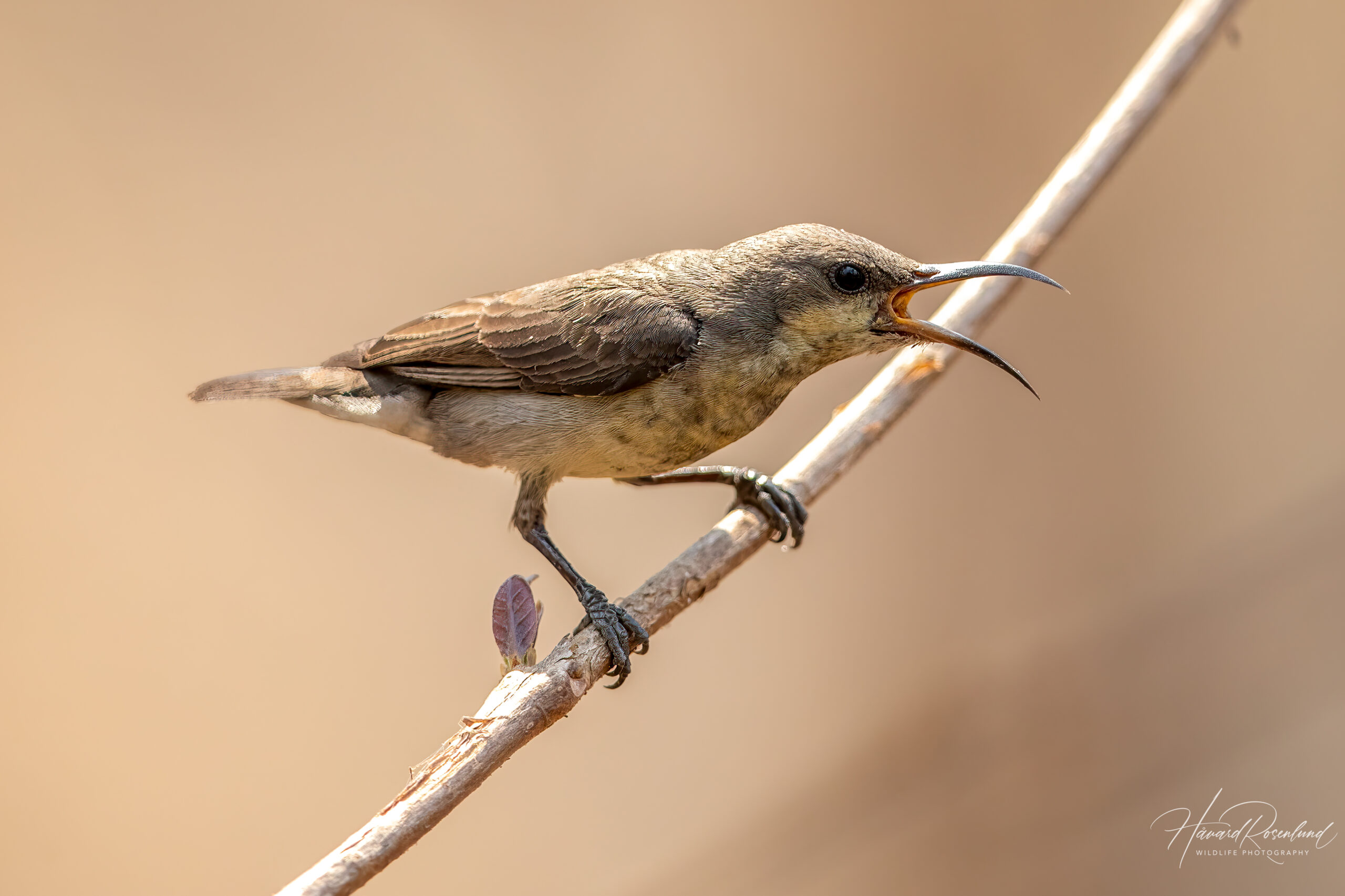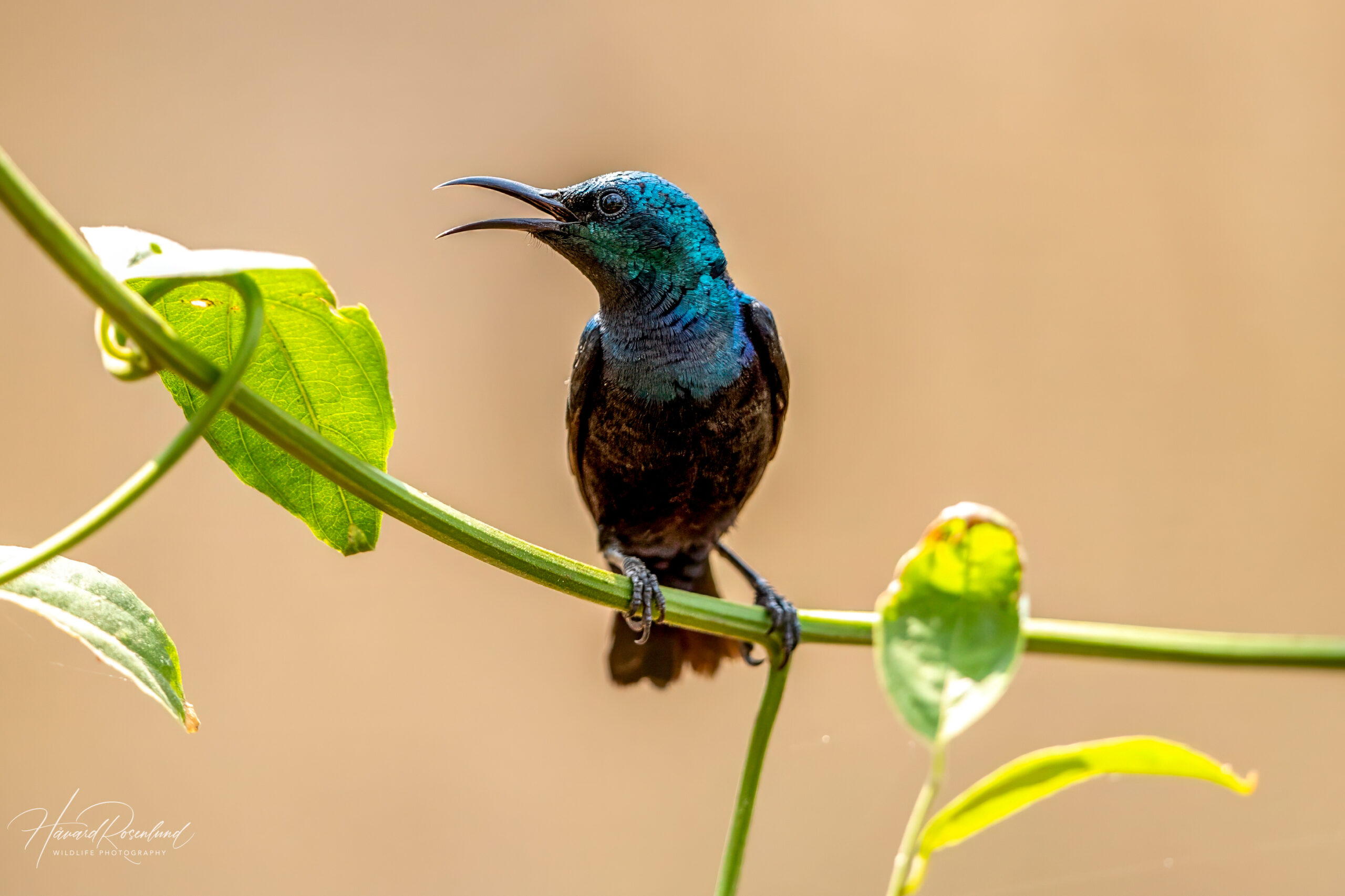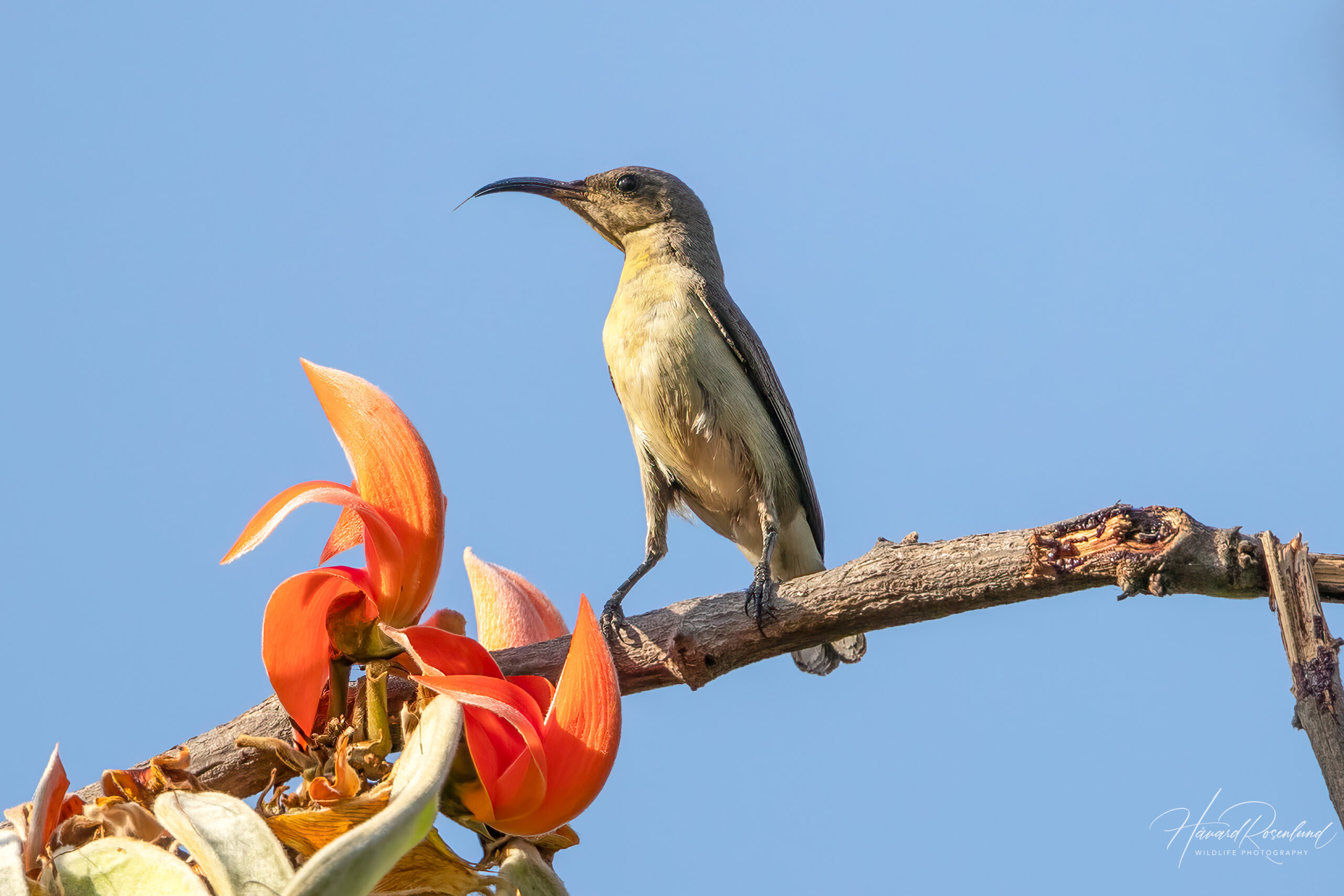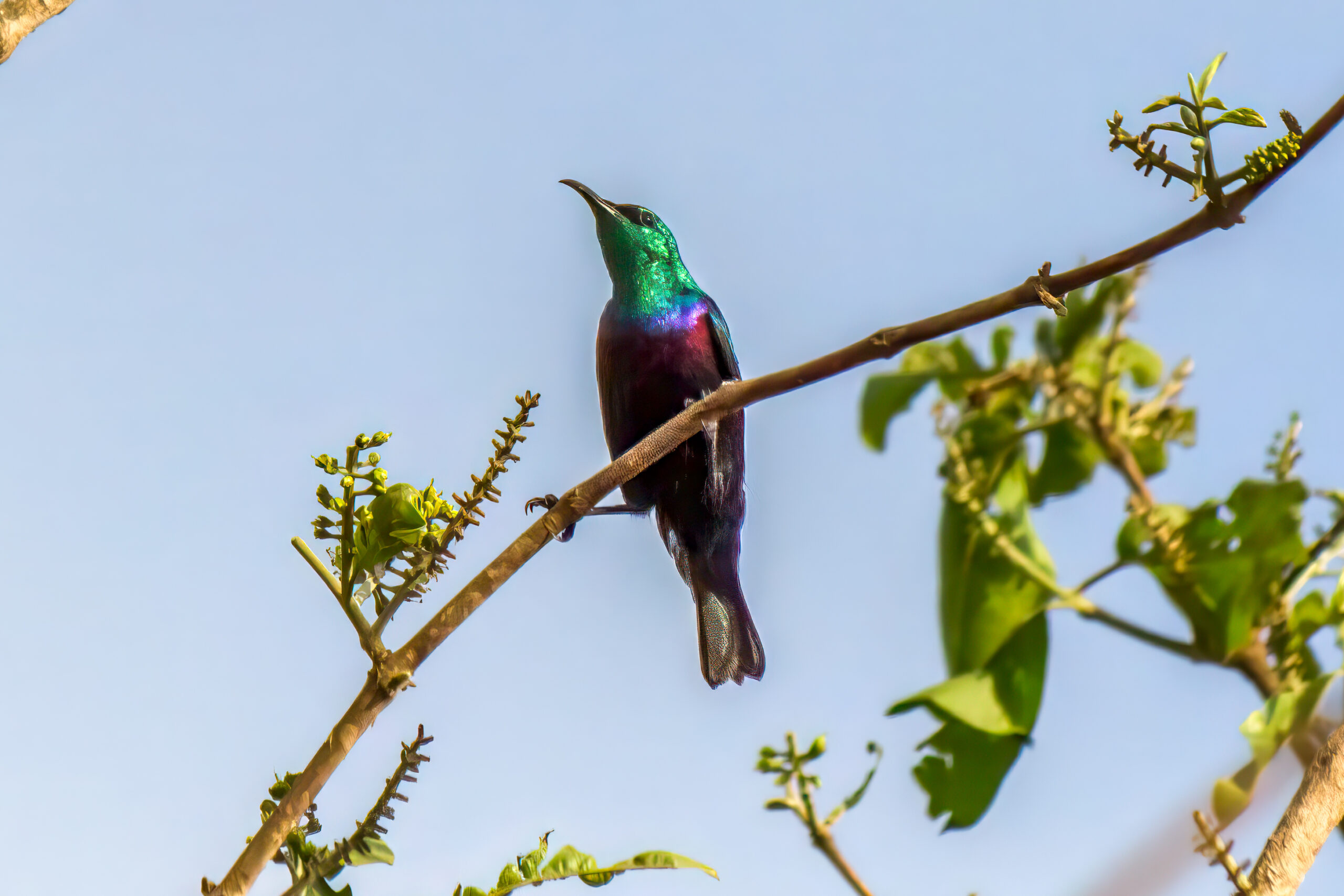Description
The purple sunbird (Cinnyris asiaticus) is a small nectar-feeding bird found across the Indian Subcontinent and Southeast Asia. These birds are easily identifiable by their iridescent plumage. Males in breeding plumage are predominantly deep purple with a metallic sheen, while non-breeding males and females are olive above and yellowish below. Non-breeding males are separated by females by having a black stripe along their belly and darker wings. Purple sunbirds typically measure about 10-11 cm (ca. 4 inches) in length. They can be distinguished from the similar Loten’s sunbird (Cinnyris lotenius) in India by their much shorter bills and smaller and more compact appearance.
Diet & habitat
Purple sunbirds are found in a wide range of habitats from dense forests to urban gardens. They are adaptable and can thrive near human habitation. Their diet primarily consists of nectar, which they extract with their curved bills while hovering like hummingbirds. However, they also consume insects and spiders, especially when feeding their young. Their ability to hover allows them to feed from a variety of flowers, including those with tubular shapes that are inaccessible to many other birds.
Nesting
Breeding season for purple sunbirds varies by region, but they typically breed from January to September. They are monogamous and exhibit a high degree of parental care. Males are territorial and perform elaborate aerial displays to attract females. Nests are purse-shaped, woven from fibers and spider webs, and suspended from thin branches. Females lay 2-3 eggs, which are incubated for about 14 days. The fledging period lasts around 17-19 days, during which both parents feed the chicks.
Status
The purple sunbird is listed as least concern on the IUCN Red List. It is a common species with a wide range and a large, stable population. There are no significant threats to this species at present, thanks in part to their adaptability to a range of habitats, including human-altered environments.




